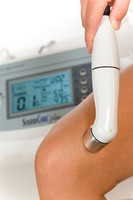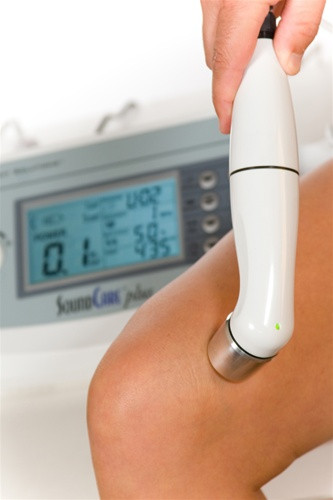 15th Jan 2016
15th Jan 2016
Therapeutic Ultrasound & It’s Uses
Therapeutic ultrasound is one of the most popular modalities in physical therapy due to its ease of use, applications for multiple issues and time efficiency. Research has shown ultrasound therapy decreases pain and increases muscular function. Ultrasound can work throughout diverse patient populations, treating deep muscular problems, breaking up scar tissue and treating closer-surface injuries.
How Ultrasound Works
Ultrasound therapy is able to create heat which is caused by crystals in the sound head vibrating. At a local level, the
sound waves create a vibration within the tissues. The vibration is what creates a deep heating effect. Benefits of this deep it are: improved circulation which opens up blood vessels allowing more oxygen to be delivered to injured tissues which generates tissue repair.
Therapeutic ultrasound uses a wand or probe that applies treatment to the patient’s problem area or injury. Using a frequency of 0.8-3.0 MHz, a gel is used on the surface in as it helps reduce friction and aids in the transmission of the ultrasound waves.
While usually the sensation of deep heat isn’t felt by the patient, deep things are happening on a chemical level during therapeutic ultrasound. Therapeutic ultrasound creates a cavitational effect which causes the formation of small bubbles that stimulate the cells when they are transmitted via vibration. This physical stimulation triggers the cellular repair of the inflammatory system.
However, ultrasound is useful beyond its heating effects, making it a powerhouse modality. Research has shown therapeutic ultrasound can:
- Increase tissue relaxation
- Increase local blood flow (which helps reduce swelling and inflammation)
- Aid scar tissue breakdown
- Achieve phonophoresis (non-invasive way of administering medications below the skin, making a perfect alternative to patients uncomfortable with injections)
Some of the most common uses for ultrasound in physical therapy are:
- Carpal Tunnel: By directing the ultrasound to the inflamed areas of the wrist, the converted sound waves create heat in the deep tissue of the hand, opening up blood vessels and delivering oxygen to the injured tissue, stimulating cell-repair. When treating carpal tunnel, ultrasound is often performed with nerve and tendon exercises in order to increase strength along with decreasing pain.
- Migraines: Therapeutic ultrasound is useful for decreasing acute migraine pain and helping the tense muscles of the head, neck and shoulders to relax.
- Radiating Pain: By improving circulation, the blood vessels are allowed to open delivering more oxygen to radiating pain areas.
- Sciatica: Ultrasound is useful when treating sciatica particularly before stretching the piriformis muscle. The deep heating penetrates the deep soft tissue allowing the piriformis muscle to relax around the sciatic nerve, which is particularly useful during acute pain episodes.
- Temporomandibular joint (TMJ) pain: Used on the jaw, the sound waves create a gentle heat that increases blood circulation to the patient’s jaw, which helps decrease pain and swelling.
Therapeutic ultrasound is a valuable tool in any physical therapy office. It’s easy to use, non-invasive with powerful results make it a great treatment option for many patient problems.






